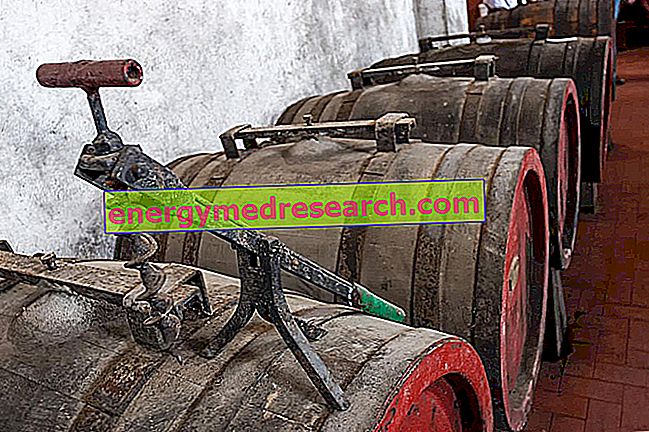What are
Chinese water chestnuts or simply water chestnuts are the edible rhizomes of a herbaceous plant typical of Asia (China, Japan, India, Philippines, etc.), of Australia, of tropical Africa, of some islands of the Ocean Pacific and others of the Indian.

How are they made?
Chinese water chestnuts are small and rounded in shape; the skin is glossy brown, while the flesh is white and crunchy. Chinese water chestnuts can be eaten raw, lightly boiled or grilled, and sometimes preserved in brine or sealed in a jar.
Nutritional Features
Chinese water chestnuts are a food of vegetable origin that lends itself to vegan, vegetarian and most of the religious or philosophical diet.
Chinese water chestnuts do not belong to either the whole or the tubers; on the other hand, by assessing their chemical composition, they could be fully included in the III fundamental group of foods. They have an energy supply slightly higher than potatoes and much lower than that of traditional chestnuts.
Chinese water chestnuts are rich in carbohydrates, which reach levels of about 90% of dry weight. Carbohydrates are mainly made up of starch, which occupies 60%, while simple sugars reach 30%.
Chinese water chestnuts are a good source of dietary fiber (3g / 100g of edible portion) and do not contain cholesterol.
Among the vitamins, the levels of riboflavin (vit B2 - 0.2mg / 100g of edible portion) and pyridoxine (vit B6 - 0.328mg / 100g) stand out; as far as mineral salts are concerned, the concentrations of potassium (584mg / 100g), copper and manganese (0.331mg / 100g) are appreciated.
Chinese water chestnuts lend themselves to any type of diet, as long as the portions are adapted to any pathologies such as: hyperglycemia, hypertriglyceridemia and overweight. They do not contain gluten or lactose and therefore can also be used by those who suffer from related intolerances.
It is difficult to establish the average portion advisable, as they do not represent a typical Italian food; on the estimation of the nutritional content it is however possible to define that, if used as a snack, the average portion of Chinese water chestnuts may fall between 100 and 200g.
How do you eat?
Chinese water chestnuts are a very common ingredient in recipes of oriental origin. In China, they are consumed mainly raw, sometimes sweetened, and have a typically crunchy consistency.
Chinese water chestnuts can also be ground to produce white flour, used to make traditional cakes that are part of the "dim sum" kitchen.
Chinese water chestnuts are a vegetable food with a very particular consistency. In fact, having cell walls interconnected and reinforced by some phenolic compounds (oligomers of ferulic acid ), they remain crispy even after cooking and / or storage in liquid. This characteristic is shared by other similar plants such as the tiger nut (tiger nut) and the lotus root (understood as a water lily, not like the persimmon plant).
Chinese water chestnuts have a very delicate flavor vaguely reminiscent of hazelnuts; they should not be seasoned excessively or with tasty ingredients, which would obscure their aromas.
A typical dish with Chinese water chestnuts based on bamboo shoots, coriander seeds, ginger, sesame oil and peas.
Disambiguation and Botany
Contrary to what the name suggests, Chinese water chestnuts are not fruits or seeds, but rather the globose roots of a marsh plant that sinks its underwater rhizomes into the mud. The plant has a shape similar to that of the rushes and reaches a height of 1.5 meters.
Chinese water chestnuts belong to the Cyperaceae Family, Genus Eleocharis and Specie dulcis ; the binomial nomenclature of water chestnuts is Eleocharis dulcis .
The root of Chinese water chestnuts is often confused with the fruits of the genus Trapa (Trapaceae family). Of the latter, the Italian species Natans is characterized by a typical and totally different form; some of its leaves are floating and with expanded lamina, while others submerged appear to have a pennate linear shape. While the rhizomes of the genus Eleocharis have a shape and a color very similar to the chestnuts, those of the genus Trapa are characteristic and (despite the attempts of the traders) difficult to equivocabile; obviously, to distinguish them from others it is necessary to know the shape of the "real" water chestnuts. The fruits of the genus Trapa are known throughout the world with the Anglo-Saxon name of water caltrop .



